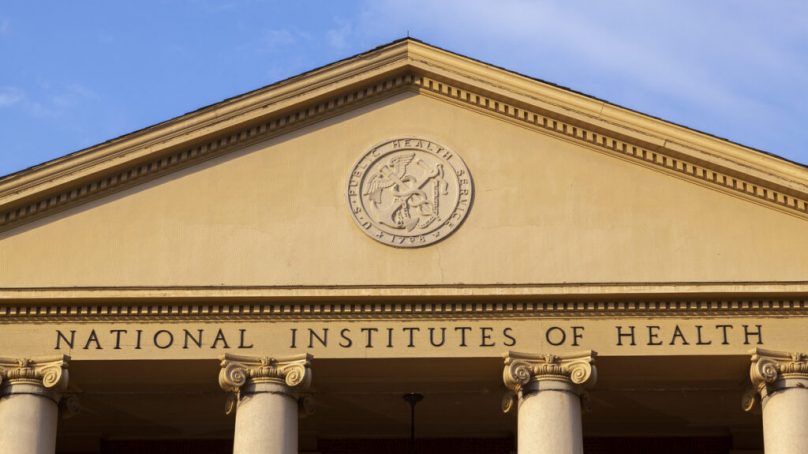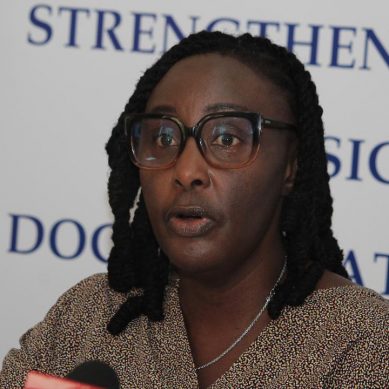
In mid-2016, as a federal moratorium still loomed over risky biomedical research, an ad hoc review committee of National Institutes of Health scientists stood as the first line of defence, tasked with determining whether US-funded projects were pursuing science deemed too dangerous to fund.
When a proposal to perform experiments on high-risk coronaviruses at the Wuhan Institute of Virology landed before the group for review, its members quietly debated concerns about the need for stricter scrutiny. They ultimately relied on assumptions and sidestepped deeper checks into whether further safeguards were necessary, allowing the proposed research to slide by.
Recently obtained government emails for the first time lay bare the NIH “gain-of-function” review committee’s informal vetting of the controversial project, demonstrating the agency’s weak oversight of the potentially dangerous research it funded at the lab where some critics believe the pandemic started.
The proposal, submitted by the New York-based non-profit EcoHealth Alliance, sought to test potentially dangerous coronaviruses by constructing chimeras – mutants spliced together from fragments of two or more viruses. And, they aimed to perform the experiments at the Chinese lab with no direct American oversight, raising questions about potential biosafety risks.
Although these experiments called for manipulating wild bat strains of viruses similar to SARS and MERS – pathogens restricted under the federal moratorium – they were deemed “technically not covered” by it, one committee concluded after reading the proposal.
Another member surmised that extra scrutiny probably wasn’t necessary, even though the plans aimed to construct a new strain using a SARS gene that plays a key role in making that virus more infectious to humans. As a pathogen listed by the federal government as a restricted “select agent,” experiments with SARS typically require additional approvals from an outside agency.
“If this is just one gene…,” the member wrote, “then (it) should be OK.”
Details about the review committee’s internal deliberations, which have not been previously reported, come amid renewed congressional investigations and ongoing regulatory reforms on federally-funded risky research projects. They were revealed in the latest emails and documents released to US Right to Know under an ongoing federal Freedom of Information Act lawsuit against the NIH.
Bryce Nickels, a professor of genetics at Rutgers University and critic of gain-of-function research, called the documents “depressing” after reviewing them.
“These are documents the public urgently needs to see because they highlight why past policies failed,” he said. “Unless we learn from the policy failures of the past and establish policies with independent oversight and public transparency, we risk yet another lab-generated pandemic.”
The committee’s informal deliberations over the proposed experiments came after EcoHealth revealed in a month-late progress report and follow-up letter that its Chinese collaborators had already constructed two chimeric viruses nine months earlier without first informing the agency, the records show.
“Surely, such experiments should have been subject to detailed scrutiny BEFORE construction of the infectious clones,” said Steve Massey, a University of Puerto Rico bioinformatics professor who reviewed the emails.
The lab work that created the chimeras took place in Wuhan in September 2015 under EcoHealth’s NIH-funded project studying coronavirus risks, records show. It involved splicing together fragments from different wild bat coronavirus strains that were genetically similar to the Severe Acute Respiratory Syndrome (SARS) virus that killed nearly 800 people more than a decade earlier.
When EcoHealth officials revealed in a May 2016 progress report that their Chinese collaborators already had constructed the SARS-like chimeras, they proposed carrying out a series of infectivity experiments with the new viruses. They also proposed constructing additional chimeric strains by inserting fragments of different bat coronaviruses into infectious clones of another pathogen, Middle East Respiratory Syndrome (MERS), and then testing their ability to infect animal and human cells.
NIH managers overseeing the grant flagged the proposed experiments to be reviewed by scientists on the agency’s ad hoc committee tasked with determining whether potentially risky studies amounted to “gain-of-function” research. At the time, such research – which involves altering pathogens to make them more infectious or transmissible to other species – was barred from federal funding under a moratorium imposed by the Obama White House two years earlier. The funding pause specifically applied to gain-of-function experiments with influenza, MERS and SARS viruses.
The grant managers and the review committee ultimately decided EcoHealth’s research wasn’t subject to the pause, largely relying on the non-profit’s own assurances and the Wuhan Institute of Virology’s international reputation to greenlight the experiments and skip additional formal reviews. Some committee members also wrongly assumed at the time that the experiments wouldn’t enhance viral infectivity and would be conducted in labs equipped to contain high-risk pathogens, the emails show.
The NIH media office under the current Trump Administration did not respond to US Right to Know’s requests for comment about the new details, or to requests to interview some of the committee members who still work at the agency.
Peter Daszak, EcoHealth’s former director who has since been barred from receiving federal research funding, also did not respond to an interview request to discuss the records.
The then-proposed experiments detailed in the records – involving manipulating bat coronavirus strains to test their transmissibility in mice with human genes – did not create SARS-CoV-2. Analyses have since shown the viruses involved in these experiments are too genetically different to have spawned the strain that caused the pandemic. But the research later became the subject of intense controversy and congressional investigations.
Critics contended the NIH should never have funded such risky research, let alone at the Wuhan lab – the site from which some believe the virus that spawned the pandemic escaped. Neither the lab leak hypothesis nor the hypothesis that virus spilled over naturally from animal to humans has been proven.
Following the pandemic’s outbreak, Daszak and Anthony Fauci, who headed the NIH’s National Institutes of Allergies and Infectious Diseases (NIAID) at the time, separately testified to Congress that the experiments did not meet the agency’s definition for gain-of-function research that was subject to the moratorium.
But some of the hybrid coronaviruses that were constructed at the Wuhan lab were later shown to increase pathogenicity and infectivity in mice genetically-modified to have some human genes, prompting some scientists, politicians and other critics to dispute their testimony as false.
The latest emails provide the most details to date about the internal deliberations of the NIH committee, which provided guidance for determining which proposals amounted to gain-of-function research during the White House moratorium from October 2014 until 2017, when a new regulatory framework was implemented.
The informal group – made up of several scientists who served in top branch or division management roles under Fauci – was responsible for ensuring that NIH-backed research wasn’t taking unnecessary risks with infectious agents that could endanger the world.
The exchanges reveal the agency’s lax approach in assessing how policies regulating risky studies at the time applied to cutting-edge research on bat coronaviruses – including newly discovered strains that hadn’t been fully assessed – in the years before the pandemic exploded. They demonstrate that officials recognized the proposed experiments crossed into some gray zones but nonetheless allowed the research to proceed.
- A Tell Media / Adopted from US Right to Know








